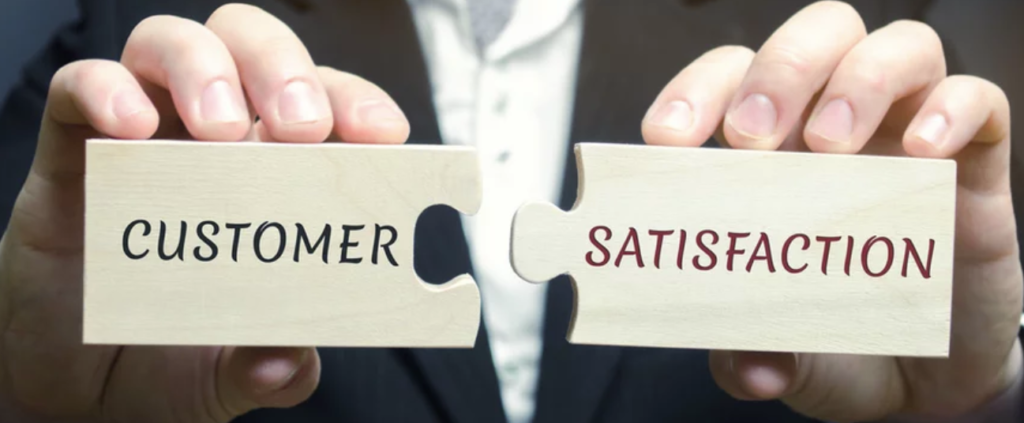
In today’s competitive landscape, customer experience (CX) is not just a nice-to-have; it’s a business imperative. A positive customer experience can significantly impact customer loyalty, brand reputation, and ultimately, your bottom line. Understanding what customers want and how to meet their expectations can set your business apart. Let’s dive into actionable strategies that can elevate your customer experience and foster lasting relationships.
Understanding Customer Expectations
Before implementing changes, it’s essential to grasp what customers truly expect from your business. Expectations vary based on industry, market trends, and individual preferences. However, certain universal elements stand out: customers want convenience, personalized interactions, and prompt support.
To gain insights into customer expectations, consider conducting surveys or utilizing feedback tools. Platforms like SurveyMonkey and Typeform make it easy to gather valuable data directly from your audience. These insights will inform your strategies and help you create a customer-centric approach.
Personalization: A Key Ingredient
Today’s consumers expect personalized experiences tailored to their preferences and behaviors. Personalization goes beyond simply addressing a customer by their name; it involves understanding their needs and preferences at every touchpoint. By leveraging data analytics, businesses can create targeted marketing campaigns, recommend products, and enhance overall engagement.
Utilizing Data for Personalization
Data is your ally in crafting a personalized customer experience. By analyzing customer behavior through website analytics, purchase history, and engagement metrics, you can identify trends and preferences. This information allows you to offer relevant content, promotions, and recommendations that resonate with your audience.
For instance, e-commerce giants like Amazon excel in personalization by suggesting products based on past purchases and browsing behavior. This not only enhances the shopping experience but also drives sales.
To learn more about effective personalization strategies, check out this insightful article on Forbes about personalization.
Seamless Omnichannel Experience
Customers today engage with brands across multiple channels—websites, social media, email, and in-store. Providing a seamless omnichannel experience is crucial for ensuring customer satisfaction. Your customers should be able to switch between channels without any friction, enjoying a consistent experience throughout their journey.
Creating a Cohesive Brand Experience
To achieve a seamless omnichannel experience, start by aligning your messaging and branding across all platforms. Ensure that your website, social media, and physical locations reflect the same values, tone, and visuals. This consistency builds trust and familiarity, making it easier for customers to engage with your brand.
Investing in customer relationship management (CRM) tools can help you track customer interactions across different channels, enabling your team to provide personalized support regardless of where the conversation starts.
Responsive Customer Support
In an age of instant gratification, customers expect quick and efficient support. Slow response times or unhelpful interactions can lead to frustration and lost business. Prioritizing responsive customer support can significantly enhance the overall customer experience.
Implementing Multi-Channel Support
Offering multiple channels for support—such as live chat, email, social media, and phone—allows customers to reach out through their preferred method. Make sure your support team is trained to provide consistent and helpful responses across all platforms.
Additionally, consider using chatbots to handle common inquiries. They can provide instant responses, freeing up human agents to tackle more complex issues. A well-implemented chatbot system can improve response times and customer satisfaction.
For further insights into effective customer support strategies, explore this Help Scout guide.
Gathering Feedback and Iterating
Improving customer experience is an ongoing process. Gathering feedback should not be a one-time effort; it must be integrated into your business practices. Regularly solicit customer feedback through surveys, reviews, and direct communication. This information is invaluable for identifying areas for improvement.
Implementing Changes Based on Feedback
Once you gather feedback, analyze the data and prioritize changes based on customer needs. Whether it’s refining your product offerings, enhancing website navigation, or improving support processes, demonstrating that you value customer input can significantly enhance loyalty and trust.
Consider using tools like NPS (Net Promoter Score) to measure customer satisfaction and track changes over time. This metric can help you gauge whether your efforts are positively impacting the customer experience.
Creating a Customer-Centric Culture
Improving customer experience isn’t solely the responsibility of your support team; it should permeate your entire organization. A customer-centric culture involves every department—from marketing to product development—working together to prioritize customer needs.
Empowering Employees
Encourage your employees to take ownership of the customer experience. Provide training that emphasizes the importance of customer interactions and equips them with the skills necessary to provide exceptional service. When employees understand their role in the customer journey, they’re more likely to engage with customers positively.
Recognizing and Rewarding Customer-Centric Behavior
Establishing recognition programs that reward employees for outstanding customer service can further promote a culture of excellence. Celebrate successes and share customer success stories to inspire others and reinforce the importance of prioritizing the customer experience.
Continuous Improvement
Improving customer experience is a journey, not a destination. As customer preferences evolve, your strategies must adapt accordingly. Stay updated on industry trends, technological advancements, and changing customer expectations to ensure you’re always providing an exceptional experience.
Investing in tools that facilitate continuous learning and improvement will help you stay ahead. Attend workshops, webinars, and industry conferences to gather fresh ideas and insights.



0 Comments